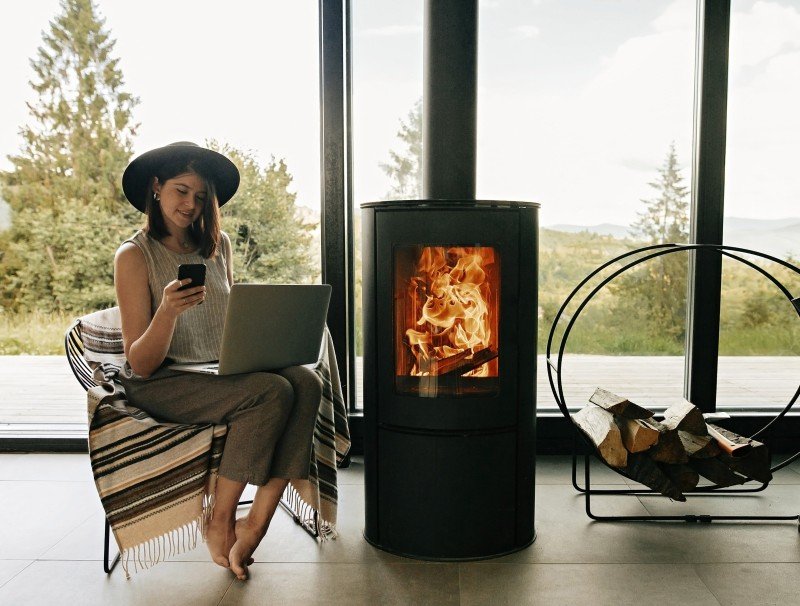Five Things You Didn't Know About Best Fireplace
The Best Fireplaces for Heat: A Comprehensive Guide
As the cold months technique, having an effective and trustworthy heat source becomes a leading concern for numerous house owners. Fireplaces not just improve the atmosphere of a home however also function as a great source of heat when temperature levels drop. With different options available on the market, it's vital to understand which type of fireplace best matches your heating requirements and choices. fireplacesandstove.com will explore the very best fireplaces for heat, their benefits, and how to pick the best one for your home.
Understanding Different Types of Fireplaces
Before diving into the best fireplaces for heat, it's essential to comprehend the various types readily available:
Wood-Burning Fireplaces: Traditional and typically used as the centerpiece of a room, wood-burning fireplaces create a warm and relaxing environment.
Gas Fireplaces: These provide benefit and constant warmth without the maintenance required for wood-burning models.
Electric Fireplaces: Ideal for those looking for an easy-to-install option, electric fireplaces are flexible and can supply heat without venting problems.
Pellet Stoves: These environment-friendly choices use compressed wood pellets and can offer efficient heating.
Bioethanol Fireplaces: A contemporary option that burns bioethanol, generating heat without the requirement for a flue or chimney.
Benefits and Disadvantages of Each Type of Fireplace
Kind of Fireplace
Advantages
Disadvantages
Wood-Burning
Conventional aesthetic, heat output
Needs consistent fuel supply, maintenance, ash disposal
Gas
Practical, easy to use
Needs gas line, less atmosphere compared to wood
Electric
No venting essential, easier installation
Limited heating capacity, relies on electrical energy
Pellet Stoves
Environment-friendly, efficient
Needs electrical power for operation, manual feeding
Bioethanol
No chimney required, contemporary design
Expensive fuel, lower heat output compared to others
Top Choices for Heating Fireplaces
1. Napoleon 1100P Freestanding Wood Stove
- Type: Wood-Burning
- Heating Area: Up to 1,800 sq. ft.
- Efficiency: 78%
- Key Features: Air wash system for cleaner glass, big firebox, and compact style.
2. Empire Comfort Systems Castleton Direct Vent Gas Fireplace
- Type: Gas
- Heating Area: Up to 1,500 sq. ft.
- Efficiency: 80%
- Key Features: Variety of styles, thermostat control, and beautiful logs.
3. Dimplex Revillusion Electric Fireplace
- Type: Electric
- Heating Area: Up to 1,000 sq. ft.
- Efficiency: 100% heat utilized.
- Secret Features: Realistic flame effect, simple installation, and push-button control.
4. Traeger Pellet Grills Pro 575 Wood Pellet Grill
- Type: Pellet Stove
- Heating Area: Variable, based on space heating.
- Performance: 90%
- Key Features: Versatile grill and heating capabilities, Wi-Fi-enabled.
5. Real Flame Siena Bio-Ethanol Fireplace
- Type: Bioethanol
- Heating Area: Up to 500 sq. ft.
- Efficiency: 3,000 BTU/hour
- Key Features: Portable, contemporary design, and no venting needed.
Fireplace Model
Type
Heating Area
Effectiveness
Cost Range
Napoleon 1100P Freestanding Wood Stove
Wood-Burning
Up to 1,800 sq. ft.
78%
₤ 1,500 – ₤ 2,000
Empire Castleton Gas Fireplace
Gas
As much as 1,500 sq. ft.
80%
₤ 1,200 – ₤ 2,500
Dimplex Revillusion Electric
Electric
Approximately 1,000 sq. ft.
100%
₤ 600 – ₤ 1,200
Traeger Pro 575
Pellet Stove
Variable
90%
₤ 500 – ₤ 800
Real Flame Siena Bio-Ethanol
Bioethanol
As much as 500 sq. ft.
3,000 BTU
₤ 300 – ₤ 600
Elements to Consider When Choosing a Fireplace
When selecting a fireplace for heating functions, numerous elements need to be taken into account:
1. Heating Capacity
Comprehending the square video footage you need to heat is vital. Procedure the location and compare it with the output of the fireplace.
2. Kind of Fuel
Think about the fuel source offered in your location (wood, gas, electrical power, etc) and your comfort with using that fuel.
3. Effectiveness Rating
A higher efficiency rating implies better heat retention and energy use.
4. Installation Requirements
Some fireplaces require substantial setup, while others can be utilized immediately. Examine your capability and determination to accommodate these needs.
5. Aesthetic appeals
The appearance and style of the fireplace ought to match your home décor, while likewise being practical for your heating needs.
Frequently Asked Questions (FAQ)
1. What type of fireplace is the most efficient for heating?
Electric fireplaces are 100% efficient as they transform all energy used into heat. However, for bigger spaces, high-efficiency wood or gas fireplaces can likewise provide considerable heating while keeping warmth.
2. Can I use a gas fireplace during a power failure?
Usually, gas fireplaces operate separately of electrical energy, suggesting they can still work throughout power interruptions, supplied a proper gas supply is readily available.
3. How frequently should I service my fireplace?
For wood-burning fireplaces, an annual inspection and cleansing are recommended. Gas and electrical variations generally require less frequent upkeep, but a yearly check is still recommended.
4. What is the lifespan of a fireplace?
The life-span differs considerably depending upon the type and usage. A wood-burning fireplace may last 20-30 years with correct upkeep, while electrical models might last as much as 15 years.
5. Is a wood-burning fireplace worth the inconvenience?
While wood-burning fireplaces need more maintenance and fuel management, many individuals value their ambiance, heat output, and the experience of a standard fire.
Selecting the best fireplace for heat in a home involves careful factor to consider of type, performance, size, and installation needs. Each type of fireplace has distinct qualities and advantages that cater to various preferences and heating requirements. With this extensive guide, property owners can make educated choices to enjoy a warm and cozy winter season. Whether going with a conventional wood-burning stove or a contemporary electric unit, the right fireplace can substantially improve both comfort and atmosphere in any living area.
